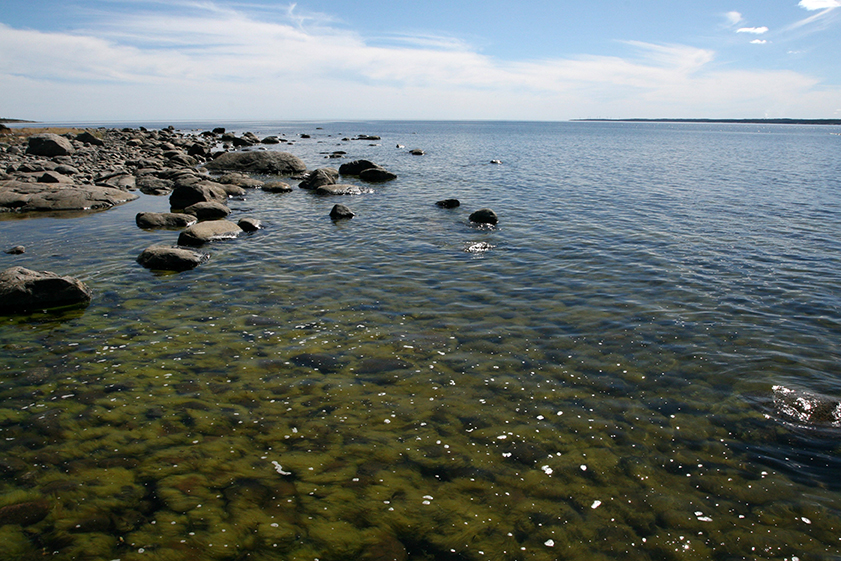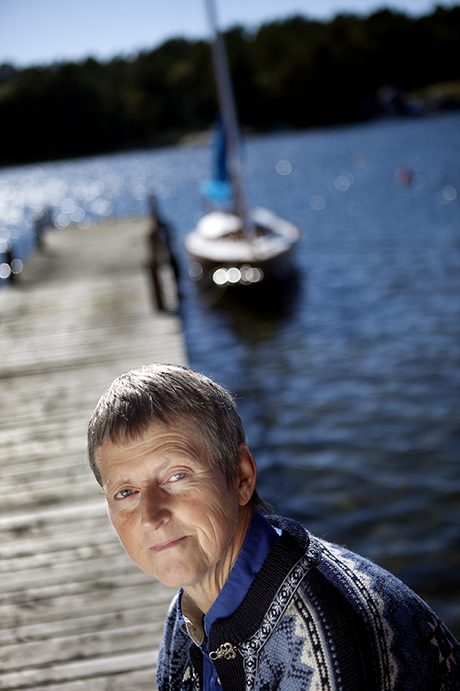- Home
- News and events
- Find news
- The Baltic shows the way for the world´s oceans
The Baltic shows the way for the world´s oceans

Photo: Daniel Johansson.
Warming, acidification, eutrophication, and oxygen depletion in areas of sea bottom are some of the changes that are taking place or expected to take place in the world’s oceans. An international research team is now promoting the Baltic Sea Region as a model for predicting and reversing the imminent changes in the coastal areas of the world’s oceans.
At first glance the Baltic Sea Region may seem uninteresting to marine scientists who are focused on the world’s oceans. The Baltic Sea is relatively shallow, has low salinity compared to the oceans, and has a narrow passage connecting it to the North Atlantic. However, this assumption could not be more wrong, so claim 26 researchers from seven countries in an article in the journal Science Advances.
According to this research team, the Baltic Sea could serve as a kind of time machine that helps marine scientists to predict more accurately imminent global changes. The small water volume of this inland sea and its slow water exchange with the North Atlantic mean the effects are greater, and many processes and interactions are happening at a faster pace than in other seas.
A heavy strain on the Baltic Sea Region
The world’s oceans have become warmer by approximately 0.5°C during the past 30 years, whereas the sea-water temperature in the Baltic has risen by no less than 1.5°C. Another change that has been observed over the same period is a tenfold increase in oxygen-depleted areas of sea bottom in the deeper parts of the Baltic compared to that in the global ocean.
 “Likewise, we can see evidence of acidification in the Baltic by studying the lower pH values, which regularly drop to levels that are not expected in the big oceans until during the next century,” says Kerstin Johannesson, a professor and marine scientist at the University of Gothenburg and one of the authors behind the study.
“Likewise, we can see evidence of acidification in the Baltic by studying the lower pH values, which regularly drop to levels that are not expected in the big oceans until during the next century,” says Kerstin Johannesson, a professor and marine scientist at the University of Gothenburg and one of the authors behind the study.
One reason for the extreme values seen in the Baltic is that nine countries border directly on it. All of these have coastal areas that are highly industrialised and densely populated. Intensive farming and heavy fishing pressure have an impact too.
Improvements through monitoring and collaboration
Not everything is black, however. The Baltic is one of the world’s most closely monitored sea areas where scientific observations and measurements have been ongoing since the early 20th century. There is also a strong tradition of scientific collaboration between many of the countries in the region.
Since the 1980s the joint efforts of the Baltic countries have included successfully reducing the overuse of nutrients and putting a stop to overfishing. These joint measures have meant that populations of predators such as the sea eagle are no longer in decline. These improvements have come about thanks to binding agreements between the countries.
The Baltic as a model region
Overfishing, the rise in sea temperatures, acidification, eutrophication, oxygen depletion in areas of sea bottom and the intensive exploitation of coastal waters are phenomena that can be observed in all the world’s oceans.
“Because these changes have been especially dramatic in the Baltic, and also because some of the problems have started to be successfully addressed here, this can be seen as a model region for predicting what might happen and what could be done in other areas of the world to tackle future challenges,” says Annica Sandström, Professor in Political Science at Luleå University of Technology.
Contacts:
Kerstin Johannesson, University of Gothenburg, kerstin.johannesson@marine.gu.se
Helén Andersson, the Swedish Meterological and Hydrological Institute (SMHI), Norrköping, helen.andersson@smhi.se
Michele Casini, the Swedish University of Agricultural Sciences, Lysekil, michele.casini@slu.se
Linda Laikre, Stockholm University, linda.laikre@popgen.su.se
Annica Sandström, Luleå University of Technology, annica.sandstrom@ltu.se
Karin Tonderski, Linköping University, karin.tonderski@liu.se
Link to article: http://dx.doi.org/10.1126/sciadv.aar8195
Photos:
Top photograph, Daniel Johansson.
Portrait of Kerstin Johannesson, photographer Malin Arnesson
Participating institutions:
GEOMAR Helmholtz Centre for Ocean Research Kiel (Germany), the Swedish Meteorological and Hydrological Institute SMHI, Norrköping (Sweden), Åbo Akademi University, Turku (Finland), Aarhus University, Roskilde (Denmark), the Swedish University of Agricultural Sciences, Lysekil (Sweden), the University of Warsaw, Warsaw (Poland), Aarhus University, Roskilde (Denmark), the Geological Survey of Denmark and Greenland, Copenhagen (Denmark), the University of Helsinki, Helsinki (Finland), The University of Gothenburg, Tjärnö, Strömstad (Sweden), the Helmholtz Centre for Environmental Research (UFZ), Magdeburg (Germany), the University of Turku, Turku (Finland), the Finnish Environment Institute (SYKE), Helsinki (Finland), Stockholm University, Stockholm (Sweden), the Technical University of Denmark, Kongens Lyngby (Denmark), the National Marine Fisheries Research Institute, Gdynia (Poland), the Thünen Institute of Baltic Sea Fisheries (Germany), the University of Tartu, Tartu (Estonia), Luleå University of Technology, Luleå (Sweden), the Thünen Institute of Farm Economics, Braunschweig (Germany), Linköping University, Linköping (Sweden)
Reference:
Reusch, T. H. B., J. Dierking, H. Andersson, E. Bonsdorff, J. Carstensen, M. Casini, M. Czajkowski, B. Hasler, K. Hinsby, K. Hyytiäinen, K. Johannesson, S. Jomaa, V. Jormalainen, H. Kuosa, S. Kurland, L. Laikre, B. R. MacKenzie, P. Margonski, F. Melzner, D. Oesterwind, H. Ojaveer, J. C. Refsgaard, A. Sandström, G. Schwarz, K. Tonderski, M. Winder, M. Zandersen (2018): The Baltic Sea as a time machine for the future coastal ocean. Sci. Adv. 2018;4: